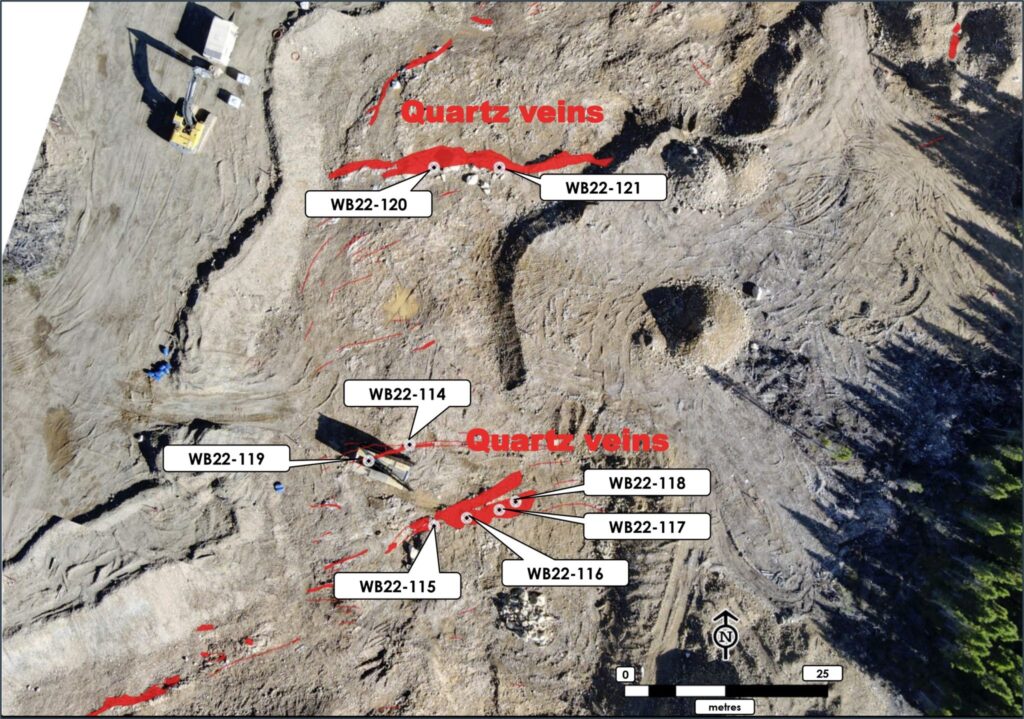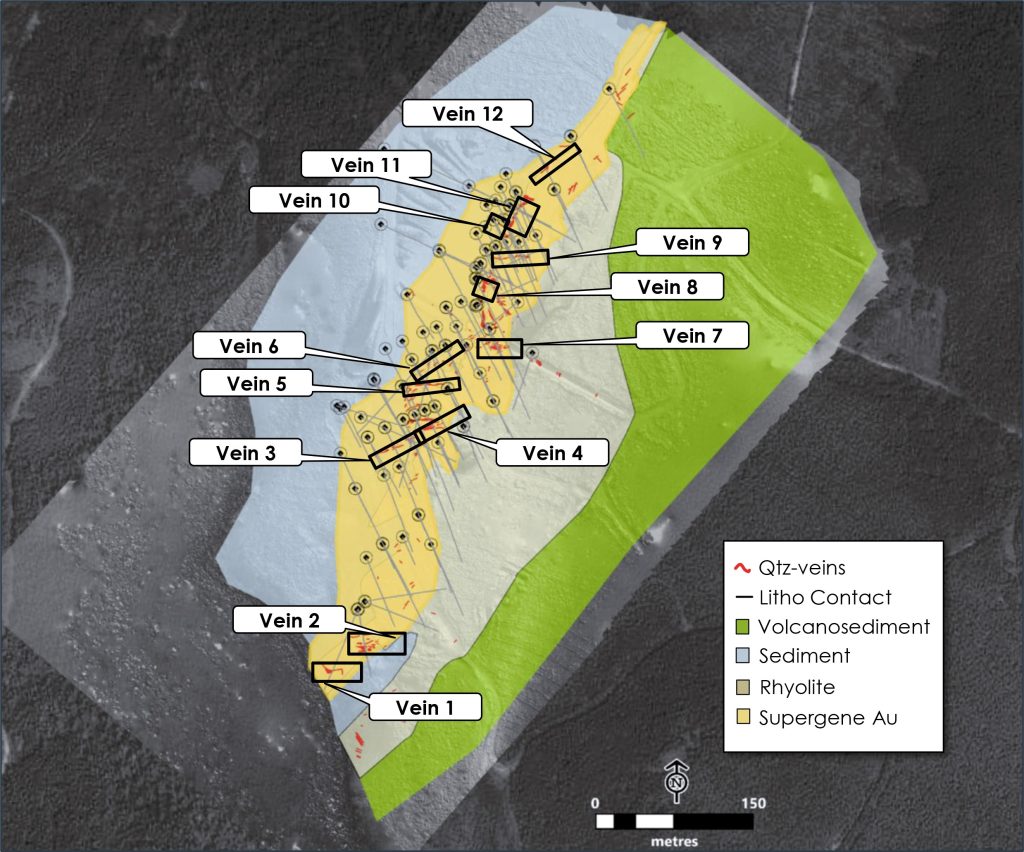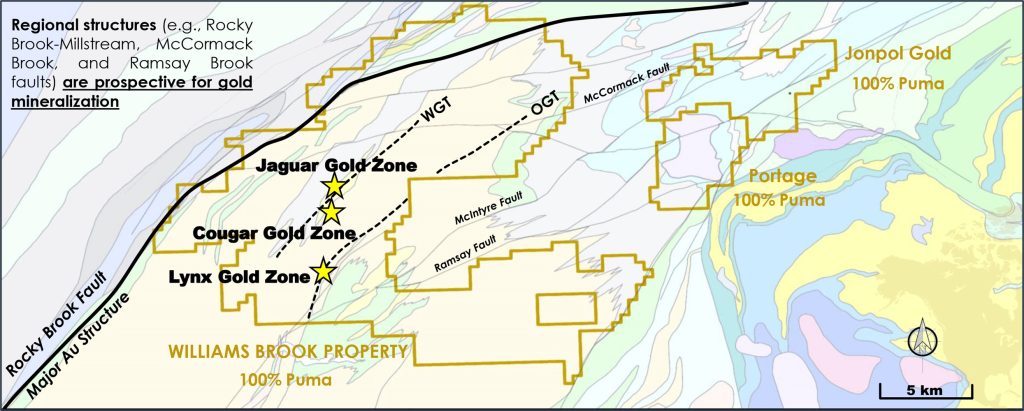Puma Exploration Inc. announced that it has launched a significant metallurgical study at its Williams Brook Gold Project following exceptional results from a preliminary metallurgical test conducted this past summer. Mineral processing recovered up to 99.7% gold from samples drilled in 2021 at the Lynx Gold Zone (“LGZ”).
The larger-scale testing is designed to increase the representativity of the initial results and enhance the gold recovery at the Lynx Gold Zone. The expanded test will be instrumental in optimising Puma’s ongoing development at the LGZ and will provide valuable data as the Company prepares for a bulk sample.
Gold recovery ranged from 98.7% to 99.7%; Simple gravity, using only a bench scale Knelson concentrator, recovered 92% gold; The head grade of low-grade material was calculated at 1.49 g/t Au vs 46 g/t Au (measured), indicating that a “nugget effect” is at play; Recovery required little cyanide – only 0.19 kg/t to 1.98 kg/t for optimal recovery;
LGZ samples contain negligible arsenic and sulfur. Puma contracted Research & Productivity Council (“RPC”) from Fredericton, New Brunswick, an accredited laboratory, to conduct a preliminary recovery program on pulps and rejects from selected high-grade and low-grade drill core samples collected during its 2021 drilling campaign at the Lynx Gold Zone. Nearly 3,000 samples were processed, including 11 kg of high-grade quartz-rhyolite pulp samples, 9.5 kg and 6.5 kg of low-grade quartz-rhyolite pulp samples and low-grade quartz-rhyolite reject samples.
A centrifugal gravity concentration test was conducted on the homogenised low-grade reject samples. At a grind size of 100% passing 1.0 mm, a concentrate grading 35.0 g/t Au was produced in 3.9% of the mass to give a recovery of 92% Au. Also, the test head grade was calculated at 1.49 g/t Au whereas the material measured 0.46 g/t Au, indicating that the material is subject to the nugget effect.
A standard cyanidation extraction was also completed to maximise gold recovery. The high-grade rejects, low-grade pulps and low-grade rejects underwent bottle roll cyanidation. Gold recoveries were 99.7%, 98.7% and 99.2%, respectively. The full report will be available on Puma’s website.
Drilling has confirmed that the Lynx Gold Zone hosts a significant gold system. Puma’s expanded metallurgical program is designed to better define the quality of gold mineralisation at the Lynx Gold Zone, identify opportunities and potential challenges and further optimise recovery. The study will also provide Puma with a flowsheet (recipe) for processing a future bulk sample.
For this advanced study, the following material from the Lynx Gold Zone will be processed: Samples from eight (8) new HQ holes drilled this fall; Grab, chip and channel samples collected from 12 significant gold-bearing quartz veins uncovered during this fall’s stripping operation.
Eight (8) HQ holes, for a total of 102 m, were drilled on three (3) main quartz veins (Figure1). Half of the core was sent to RPC for the recovery tests, and the other half was split and sent to the ALS Chemex lab for gold assaying. The core sent to RPC will be blended to make one (1) representative sample for each hole. The holes vary in length from 6 metres to 18 metres (see Table 1).
Figure 1. Location of the eight (8) HQ holes drilled at the LGZ

To get a better representation of the mineralisation at the Lynx Gold Zone for the advanced recovery tests, Puma also sampled material from quartz veins uncovered at surface by this summer’s stripping operation. Grab, chip and channel samples were collected from 12 large quartz veins (see Picture 1 and Figure 2) representing a strike length of over 600 metres at the Lynx Gold Zone. Samples from each vein were blended to represent that vein and sent to RPC. A total of twelve 45-gallon drums (one for each vein), totalling about 300 kg (600 lbs) each, were sent for testing.
Picture 1. Typical quartz vein sampled at the LGZ

Figure 2. Location of the 12 significant quartz veins sampled at the LGZ

FIGURE 3: The Williams Brook Gold Project

The Lynx Gold Zone is interpreted to be a mineralised felsic dome within a large epithermal/orogenic gold system part of the Appalachian Orogeny. The high-grade gold mineralisation is characterised by finely disseminated gold in quartz (veins, veinlets, stockworks, breccias) affected by pervasive supergene alteration. The stratigraphy of the dome is well-defined and typical: fine laminated turbidite-type sedimentary unit, rhyolite breccia with sedimentary fragments, massive rhyolite unit and sedimentary and volcano-clastic units. The contact between the sediment and the rhyolite allowed for the movement of gold-bearing fluids and is characterised by highly silicified iron oxide carbonates and intense sericite alteration. The Lynx Gold Zone was discovered in 2020 by high-grade surface samples and later recognised at depth in 2021 by hole WB21-02 that intersected 5.55 g/t Au over 50.15 m from surface, including two high-grade gold veins with 9.88 g/t Au over 8.60 m and 46.94 g/t Au over 3.85 m.
(Source: Press Releases – www.explorationpuma.com/en/puma-exploration-launches-expanded-metallurgical-study-following-99-7-gold-recovery-from-preliminary-tests/)
Please send your press releases to press@miningnewspaper.com or juan.lamadrid@miningnewspaper.com